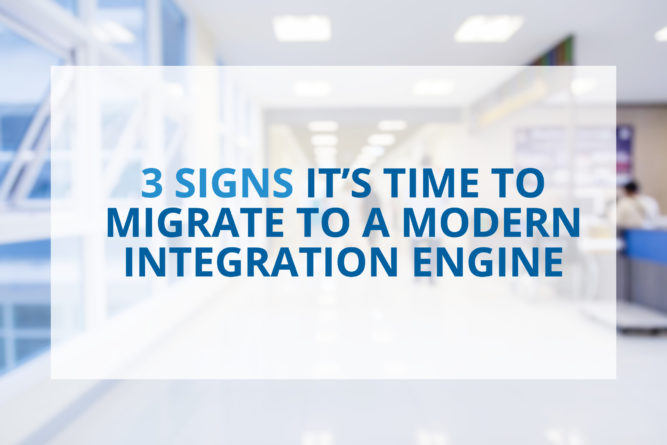
Migration to a modern integration engine can be one of the most important decisions you make to help optimize your organization. Modern integration engines have become more important than ever before, as interoperability has expanded to include a growing number of applications and devices.
Assessing whether it’s the right time to move away from legacy engines is an important factor before beginning the migration process. To assist healthcare leaders in this decision, we outline 3 common signs it’s time to migrate to a modern integration engine.
Your projects are starting to require more than just HL7 integration.
One of the first signs it is time to migrate is when your projects are starting to require interfaces that go beyond just HL7 integration.
Healthcare data is becoming increasingly accessible to patients as well as providers, vendors and payers. For example, The Interoperability and Patient Access final rule (CMS-9115-F) gives patients access to health information including diagnosis, procedures and tests history.
With such substantial legislative changes underway, we can expect that healthcare data will become available in a variety of formats, including FHIR, CDA and X12 among many others. Therefore, you may notice that your projects will require more than standard HL7 integrations. A modern engine should be able to handle any data format to ensure seamless exchange of information.
The integration engine is failing to meet performance benchmarks.
Another common sign it’s time to migrate your integration engine is when performance benchmarks are not met. For example, consider message volume, a key performance indicator for any modern integration engine.
Do you find yourself having to invest in additional infrastructure each time your business scales? Are you experiencing significant delays or outages when message volume increases? If the answer is yes, then it may be time to migrate to a new engine.
The integration engine is not compatible with High Availability architecture.
Finally, consider whether the integration engine can be configured to be Highly Available. High Availability (HA) is critically important as it ensures the continuity of information exchange despite unplanned downtime. Is your integration engine configured to support the transfer of patient data reliably?
Next Steps
If your healthcare integration engine is showing any of the 3 signs, it might be time to consider migrating to a modern alternative. At iNTERFACEWARE, we understand how important it is to work with a team of specialists who understand the complexities of migration. To assist in the process, we put together a guide to successful migration. Download today.
–
For over 20 years, the Iguana Integration Engine has provided healthcare organizations around the world with a proven, high-performing interoperability platform for the rapid and reliable acquisition and exchange of critical healthcare data. Learn more about Iguana here.
